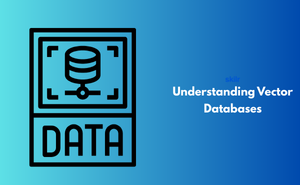👇 CELEBRATE CLOUD SECURITY DAY 👇
00
HOURS
00
MINUTES
00
SECONDS

A vector database is a modern data management system built to handle vectors, which are numeric representations of real-world data. These vectors capture the meaning of text, images, sound, and other content, allowing machines to recognize relationships beyond exact matches. With this approach, searching becomes more natural and human-like. Instead of only retrieving items with the same keywords, it can return results that are contextually or visually similar.
Traditional databases are great for handling tables and numbers but often fail with today’s massive wave of unstructured information. Vector databases solve this challenge by supporting artificial intelligence and machine learning applications. They are behind many of the smart tools we use daily, from personalized shopping recommendations to advanced cybersecurity systems that detect unusual activities.
This exam is ideal for:
Domain 1 - Introduction to Vector Databases
Domain 2 - Core Concepts
Domain 3 - Working with Data
Domain 4 - Hands-on Implementation
Domain 5 - Performance & Scalability
Domain 6 - Security & Governance
Domain 7 - Future Trends
Industry-endorsed certificates to strengthen your career profile.
Start learning immediately with digital materials, no delays.
Practice until you’re fully confident, at no additional charge.
Study anytime, anywhere, on laptop, tablet, or smartphone.
Courses and practice exams developed by qualified professionals.
Support available round the clock whenever you need help.
Easy-to-follow content with practice exams and assessments.
Join a global community of professionals advancing their skills.
E-commerce, healthcare, finance, cybersecurity, social media, and AI-driven apps.
Yes, it shows expertise in a cutting-edge field and improves job market value.
Basic AI/ML knowledge helps but is not always required; the course builds fundamentals.
Python is most common, but APIs support multiple languages.
Yes, most providers offer managed cloud options for scalability.
Roles like AI Engineer, Data Scientist, NLP Engineer, and Database Specialist.
It’s rapidly growing as AI adoption increases across industries.
Because most modern data (text, video, images) is unstructured and needs smarter searching.
It’s a database that stores data as vectors (numbers) to help find similar content, like finding images that look alike.
No, startups and mid-sized companies also use them for AI-powered apps.